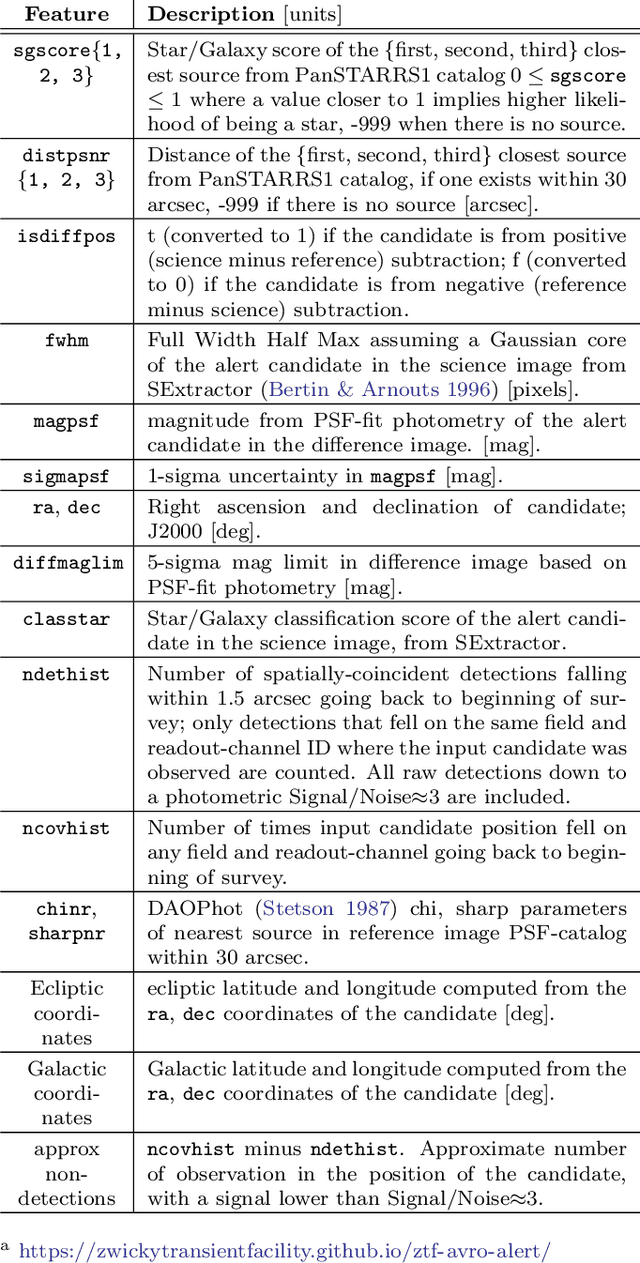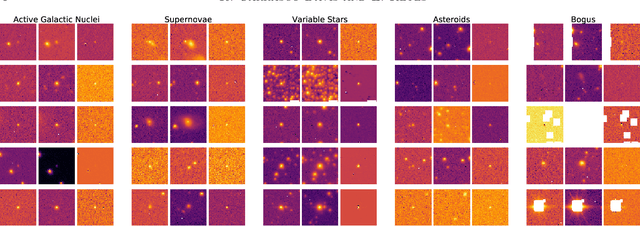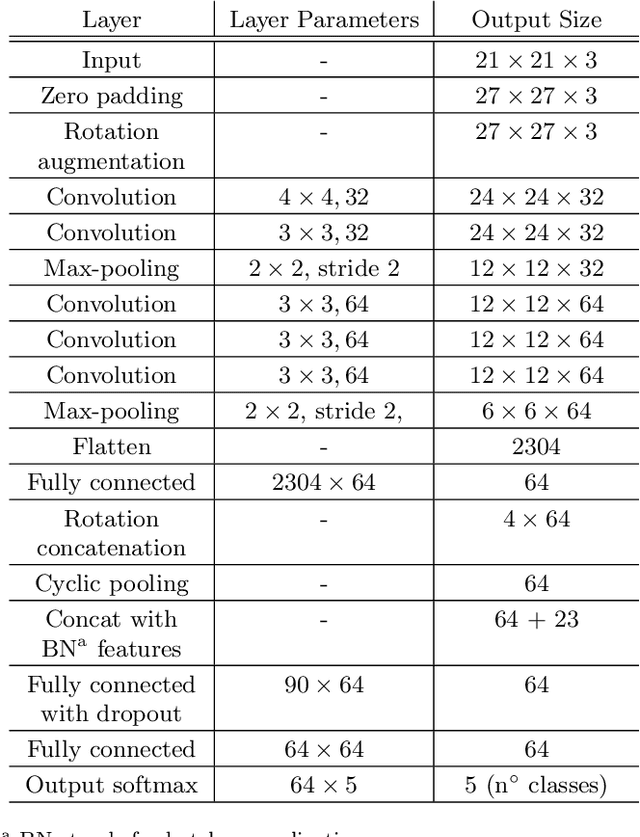Paula Sánchez-Sáez
Multi-Class Deep SVDD: Anomaly Detection Approach in Astronomy with Distinct Inlier Categories
Aug 10, 2023Abstract:With the increasing volume of astronomical data generated by modern survey telescopes, automated pipelines and machine learning techniques have become crucial for analyzing and extracting knowledge from these datasets. Anomaly detection, i.e. the task of identifying irregular or unexpected patterns in the data, is a complex challenge in astronomy. In this paper, we propose Multi-Class Deep Support Vector Data Description (MCDSVDD), an extension of the state-of-the-art anomaly detection algorithm One-Class Deep SVDD, specifically designed to handle different inlier categories with distinct data distributions. MCDSVDD uses a neural network to map the data into hyperspheres, where each hypersphere represents a specific inlier category. The distance of each sample from the centers of these hyperspheres determines the anomaly score. We evaluate the effectiveness of MCDSVDD by comparing its performance with several anomaly detection algorithms on a large dataset of astronomical light-curves obtained from the Zwicky Transient Facility. Our results demonstrate the efficacy of MCDSVDD in detecting anomalous sources while leveraging the presence of different inlier categories. The code and the data needed to reproduce our results are publicly available at https://github.com/mperezcarrasco/AnomalyALeRCE.
Alert Classification for the ALeRCE Broker System: The Real-time Stamp Classifier
Aug 07, 2020



Abstract:We present a real-time stamp classifier of astronomical events for the ALeRCE (Automatic Learning for the Rapid Classification of Events) broker. The classifier is based on a convolutional neural network with an architecture designed to exploit rotational invariance of the images, and trained on alerts ingested from the Zwicky Transient Facility (ZTF). Using only the \textit{science, reference} and \textit{difference} images of the first detection as inputs, along with the metadata of the alert as features, the classifier is able to correctly classify alerts from active galactic nuclei, supernovae (SNe), variable stars, asteroids and bogus classes, with high accuracy ($\sim$94\%) in a balanced test set. In order to find and analyze SN candidates selected by our classifier from the ZTF alert stream, we designed and deployed a visualization tool called SN Hunter, where relevant information about each possible SN is displayed for the experts to choose among candidates to report to the Transient Name Server database. We have reported 3060 SN candidates to date (9.2 candidates per day on average), of which 394 have been confirmed spectroscopically. Our ability to report objects using only a single detection means that 92\% of the reported SNe occurred within one day after the first detection. ALeRCE has only reported candidates not otherwise detected or selected by other groups, therefore adding new early transients to the bulk of objects available for early follow-up. Our work represents an important milestone toward rapid alert classifications with the next generation of large etendue telescopes, such as the Vera C. Rubin Observatory's Legacy Survey of Space and Time.
 Add to Chrome
Add to Chrome Add to Firefox
Add to Firefox Add to Edge
Add to Edge